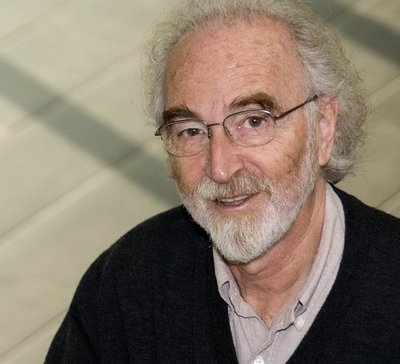The human body is two-thirds water. Oceans cover 71 percent of our planet. Water fills each one of our cells, and without it life cannot exist.
“Water is the most abundant entity on the Earth, and yet the reasons for its unusual and interesting properties are poorly understood,” says Gerald Pollack, professor of bioengineering. “Our understanding of water is primitive.”
Pollack will deliver the 32nd annual UW faculty lecture, Water, Energy and Life: Fresh Views From The Water’s Edge at 7 p.m. Wednesday, Jan. 30, in 130 Kane. Admission is free and the public is welcome.
His revolutionary theory of water could affect studies from cell biology to cloud formation, and might even explain how oceanic depressions can swallow up ships at sea.
People have long known that water is different from other liquids. Water’s freezing point and boiling point are “off the charts,” Pollack says. Science textbooks simply report that water is an exception to most rules. Pollack believes he may be on to an answer. For the past decade the UW researcher has been convincing worldwide audiences that water isn’t quite a liquid. In many cases — in the neighborhood of electrically charged, or water-loving, surfaces — it’s more like a gel, or a liquid crystal.
So the inside of a living cell is less like a water balloon, according to Pollack, and more like the kind of goo you’d see inside a raw egg.
He began his watery odyssey about a decade ago. In 2001 he published a book on water in living things, Cells, Gels and the Engines of Life. The colorful illustrated book, written for a general audience, won the Distinguished Award as well as “Best in Show” from the Society for Technical Communication. It also got Pollack thinking more deeply about water’s structure. About five years ago he set out to test those theories.
“We found something astonishing,” Pollack recalls. A few of his scientific predecessors had proposed that a charged surface could cause water molecules to line up, as they do in a crystal, as far out as 100 molecules. But his experiments showed dissolved particles disappeared and light waves behaved differently — two clues that the water molecules are lined up — in a layer 1 million molecules wide. That’s more than 10,000 times what was previously believed.
Recently, independent research confirmed his group’s early results, which initially drew skepticism from the scientific establishment because they question long-held premises.
“It’s very innovative work,” says Brent Stewart, a UW professor of radiology and one of the faculty members who nominated Pollack for the lecture. “The current paradigm is that water molecules are only structured out to at most five or six molecules. Jerry’s been able to show this out to one millimeter.”
Proposing a new structure for water isn’t just a matter of rewriting science textbooks. Water’s basic structure affects biology, chemistry and engineering. For one thing, gels can switch to solids depending on factors like temperature, acidity or the concentration of dissolved substances — conditions that change often in the body. A gel-filled cell transitioning to a solid could help explain muscle contraction, a major focus of Pollack’s 40-year career at the UW.
And that’s only the beginning.
“This impacts almost everything. If it’s right, it can’t help but create a revolution,” Pollack says.
Fields other than biology would also be affected. A new theory for water could explain why freshwater and saltwater don’t tend to mix in our oceans. Or why raindrops bounce off the surface of Lake Washington — water’s surface tension is much higher than expected. It could even explain why sinkholes — large depressions in the ocean’s surface — could cause the disappearance of ships. The researchers saw a similar behavior in their lab experiments.
Using the findings, Pollack’s bioengineering research group is devising a way to purify water without filters by collecting the pure liquid crystal that he found forms near a charged surface. He’s also working on some other applications that he won’t yet divulge.
Over the years Pollack has presented his work at many international meetings. In 2004 he chaired a Gordon Research Conference on water’s structure in living organisms. He is currently establishing a multidisciplinary journal for water research.
“The interest has been extraordinary,” Pollack says. “After a presentation I’m inevitably approached by people who say they want to get involved.”
This is the first time his ideas will be presented before a general UW audience.
“I think it will be an exciting lecture, and will inspire quite the exciting discussion afterwards,” Stewart says.
A reception in the Walker-Ames room will follow the presentation. The lecture will be rebroadcast on UWTV at a later date.
